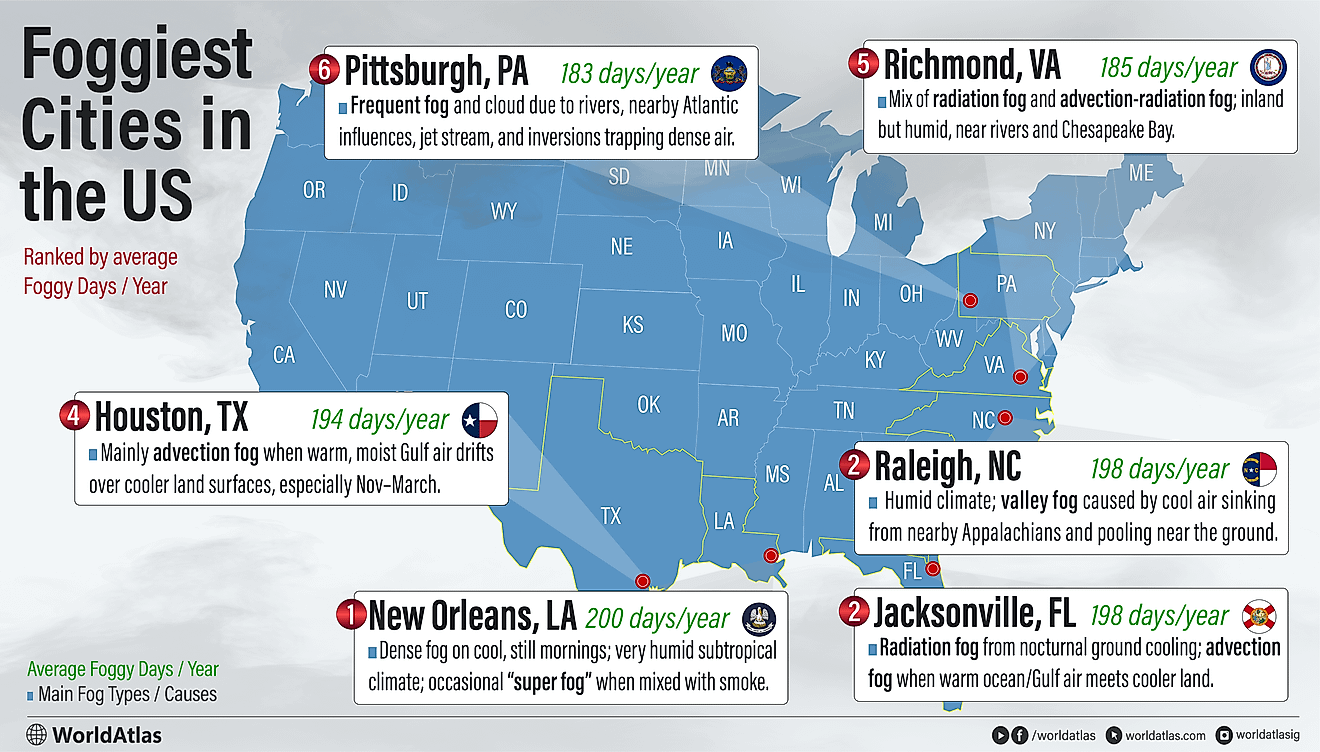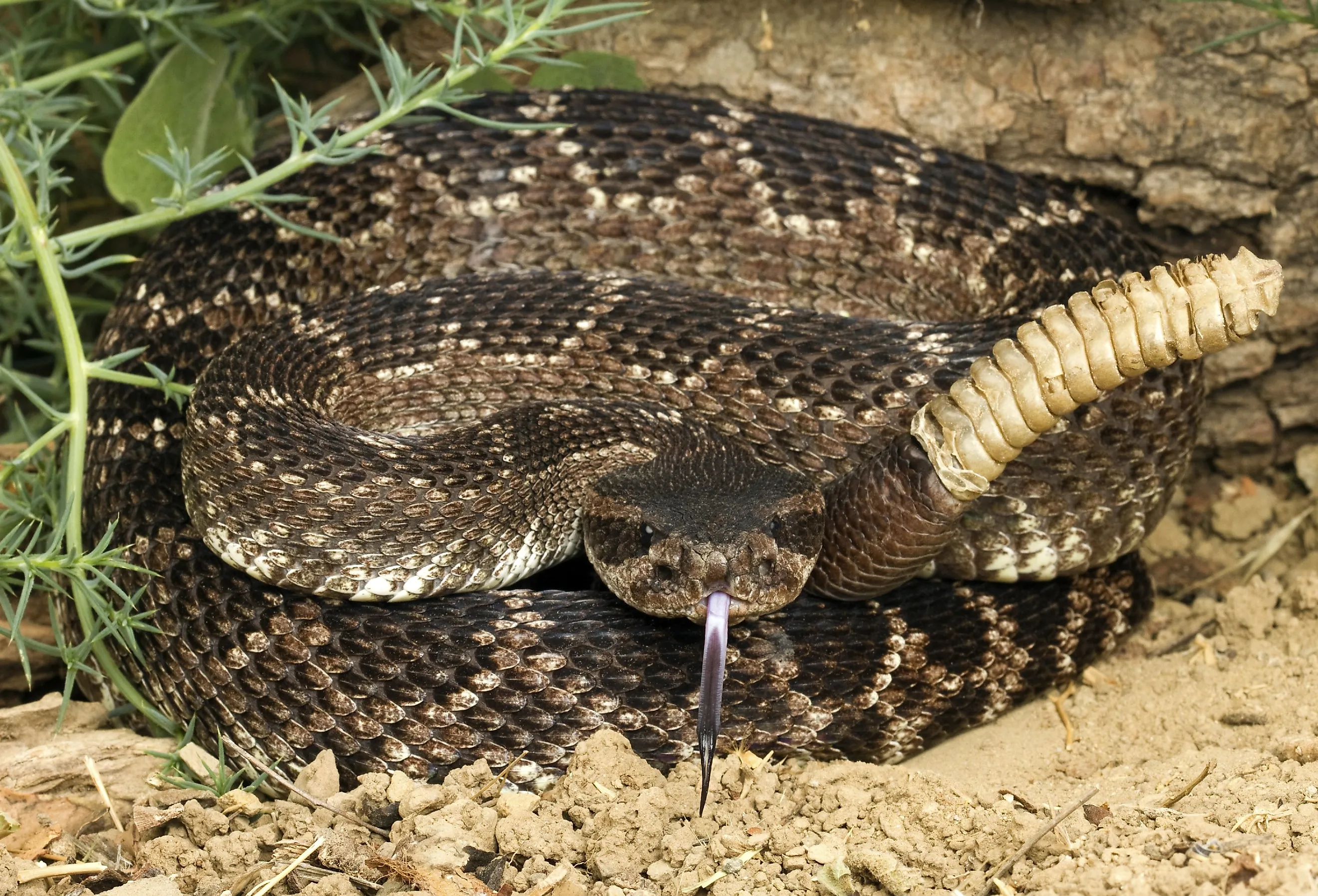
Which State Has More Venomous Snakes: California Or Nevada?
California and Nevada are both known for their dry, arid climates and vast expanses of desert, which are the perfect habitat for a huge number of ectothermic (previously known as cold-blooded) reptilian creatures. Some of the most prolific among them in these biomes are snakes, which are key members of the local ecology, keeping populations of rodents, birds, and lizards in check. However, this does little to dissuade the roughly one-third of adult humans who suffer from ophidiophobia or intense fear of snakes, as a number of these snake species possess venoms that can cause itchiness, extreme pain, or even death if left untreated.
When comparing which of these states is home to more varieties of venomous snake, however, it is important to keep in mind that both states share not only a border, but the Mojave Desert itself, and many of the species of rattlesnake which call the Mojave home, can be found in either state. According to the University of Nevada, there are six species of venomous snake within the state’s borders, all of which are a kind of rattlesnake, and one species of venomous lizard known as the Gila monster. California has ten species of rattlesnake, as well as a venomous sea snake found in the Pacific Ocean near California’s coastline, which puts its number of venomous species at 11.
Californian Exclusive Species
Thanks to California’s wide biodiversity, the state is home to nearly 50 species of snake, including ten species of rattlesnake, all of which are venomous.
Colorado Desert Sidewinder
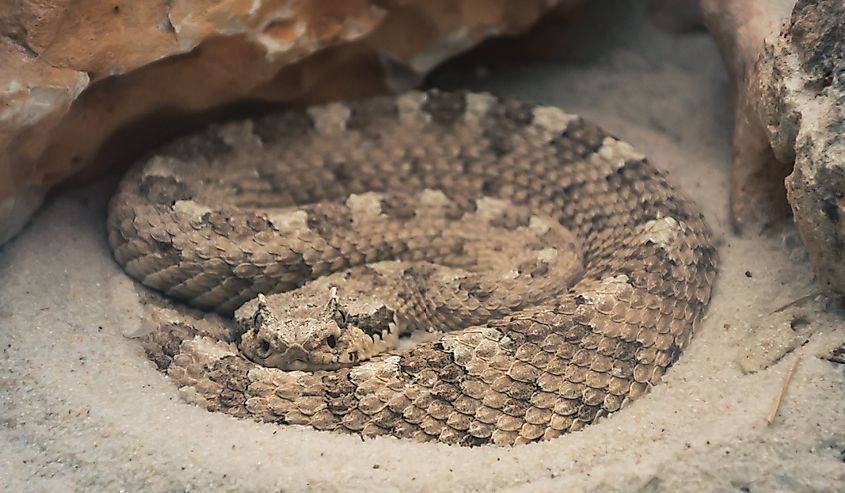
The Colorado Desert Sidewinder is a venomous species of pit viper found in the Sonoran Desert, with a native range that stretches from Southern California into Northwestern Mexico. It is sandy colored, with two enlarged scales, evoking the appearance of "horns" above each eye. The rattle on the end of their tails grows, gaining a new segment each and every time they shed their skin, though this is true of all species of rattlesnake.
While one would think that this means counting the segments could reveal how old any given snake is, as the rattle grows longer, it becomes easier and easier for these segments to break off, making them an unreliable source of information for determining a snake’s age. Their venom can cause death or serious injury, and medical help should be sought immediately if bitten by one.
Southern Pacific Rattlesnake
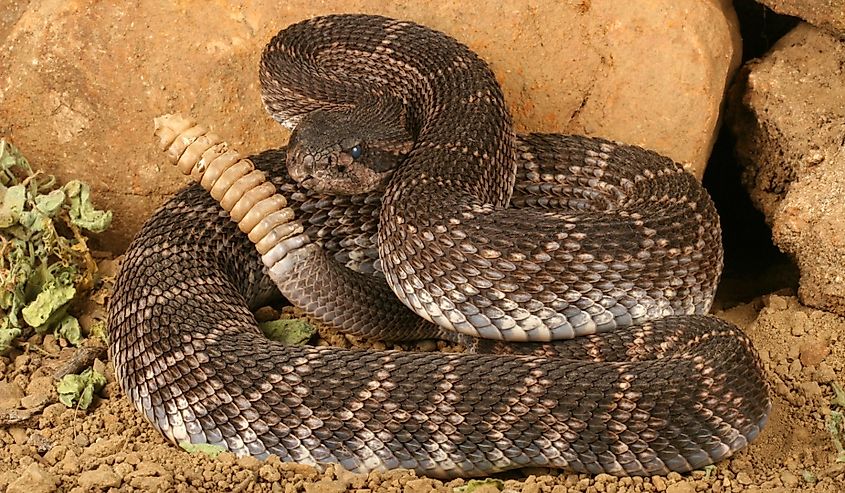
The Southern Pacific rattlesnake, also called the Black Diamond Rattlesnake, lives in the region from Southwestern California into the Baja California peninsula in Mexico. They are a pale brown color, with dark brown, diamond-shaped markings along their back. Like all species of rattlesnake, the Southern Pacific rattlesnake is a pit viper, distinguished by the small pit-organs between their eyes and nostrils, used for sensing heat while hunting endothermic (previously known as warm-blooded) animals.
Interestingly, even within this one species of rattlesnake, populations possess different forms of venom. One form is a neurotoxin, meaning it attacks the nervous system or brain, or both, which is extremely deadly, while the other form is hemotoxic, meaning it attacks the bloodstream and is less deadly than the former. However, even the hemotoxic venom can be lethal in certain doses, so you should immediately seek medical attention if bitten.
Red Diamond Rattlesnake
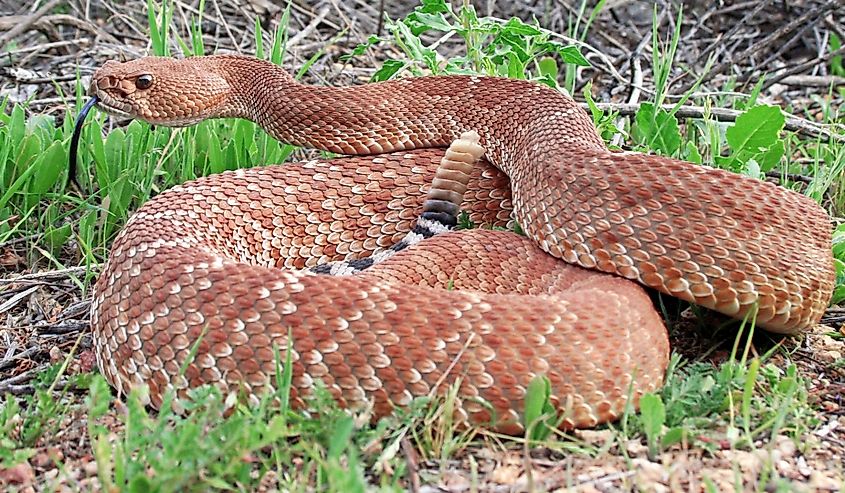
The Red Diamond rattlesnake has a similar range as the Southern Pacific rattlesnake, from Southwestern California into Baja California, Mexico. Their backs are also lined with diamond-shaped patterns but are a more reddish shade of brown than most rattlesnakes. They are, on average, a bit over three feet long, though the largest known specimen was five feet and four inches long. Populations of Red Diamond rattlesnakes that live in coastal regions tend to be longer, on average, than their counterparts found deeper inland.
Similarly, and perhaps related, is that the coastal populations tend to consume larger prey than the desert variants, living off of rabbits, ground squirrels, birds, lizards, and other snakes. While they have one of the least-potent known venoms among rattlesnakes, one should immediately seek medical treatment if bitten, as bites can still be fatal when left untreated.
Yellow-Bellied Sea Snake
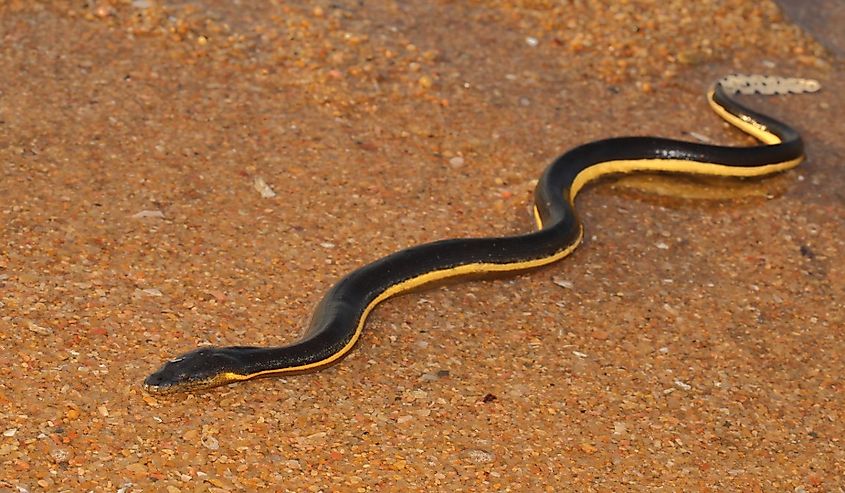
The Yellow-Bellied Sea Snake, found in the ocean along the coast of California and western Central America, has an extremely wide range. They live along the Eastern coasts of Africa and Madagascar, the shores of India, China, and Southern Japan, throughout the islands of Southeast Asia, including Indonesia and Papua New Guinea, into the Pacific island chains, as well as the Northern and Westernmost coastlines of Australia.
They are dark brown with a distinctive yellow underside, hence the name. They live their entire lives in the sea and can remain underwater for up to three hours! They are not aggressive and will sooner swim away from any encroaching humans than bite them, and their fangs are typically not long enough to penetrate wetsuits, nor do they usually employ their venom when biting out of self-defense. On the rare chance that one is envenomed by this or any other sea snake, however, it is doubly dangerous. Their venom can cause paralysis, which can lead to drowning before the venom even has a chance to be fatal.
Nevadan Species
The following species of rattlesnakes live in the arid landscapes of Nevada, but none of these species are exclusive to Nevada and also lives within California’s deserts. Other venomous snakes live in this region, including the Panamint rattlesnake, the Western Diamondback rattlesnake, and the Northern Pacific Rattlesnake.
Mojave Desert Sidewinder
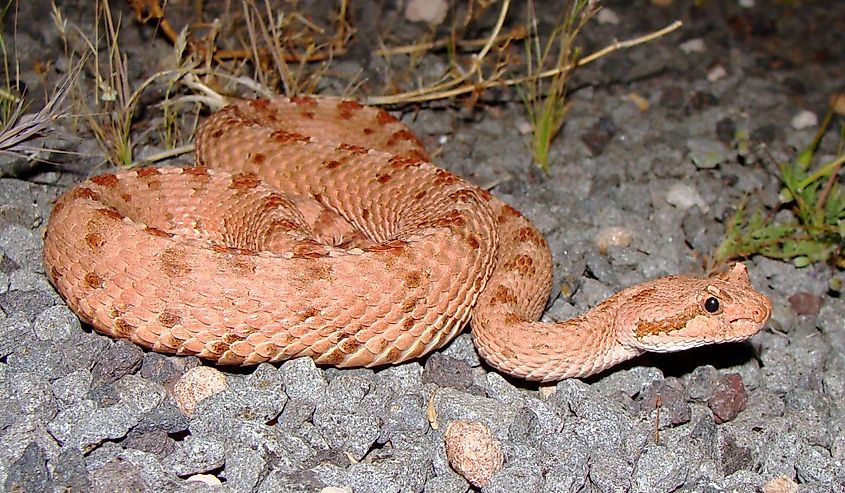
The Mojave Desert sidewinder is closely related to the Colorado Desert sidewinder, with the latter considered a subspecies of the Mojave variant. They are referred to as sidewinders due to their unique form of movement, which is advantageous when moving across sandy terrain. They are typically just under three feet long, and don a sandy coloration. They are sometimes referred to as the Horned Rattlesnake, as like the Colorado Desert sidewinder, they possess raised "supraocular scales" which resemble horns above the eyes, which are thought to either keep the sun out of their eyes, or prevent sand from getting into their eyes when they burrow under the sand.
Mojave Rattlesnake
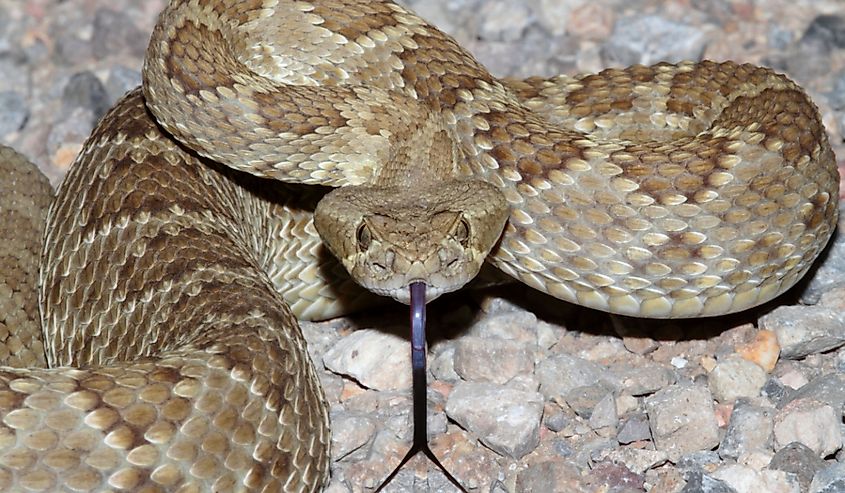
The Mojave rattlesnake, which is the most venomous on this list, lives in California, Nevada, Arizona, New Mexico, Texas, and South into Mexico. They prefer dry, arid regions, but can occasionally be found in woodland as well. Their color varies from shades of brown to pale green, with their coloration varying depending on their chosen environment. Their venom is both neurotoxic and hemotoxic, making it the most potent venom of all rattlesnakes, even rivaling that produced by snakes such as cobras and mambas.
Despite the highly-lethal potency of their venom, chances of survival if one seeks medical attention immediately after a bite are very high. Another important myth to dispel concerning rattlesnakes in order to avoid bites is that they do not always rattle their tails prior to striking and that these animals should be given a wide berth regardless of whether they are rattling their tails or not.
Southwestern Speckled Rattlesnake
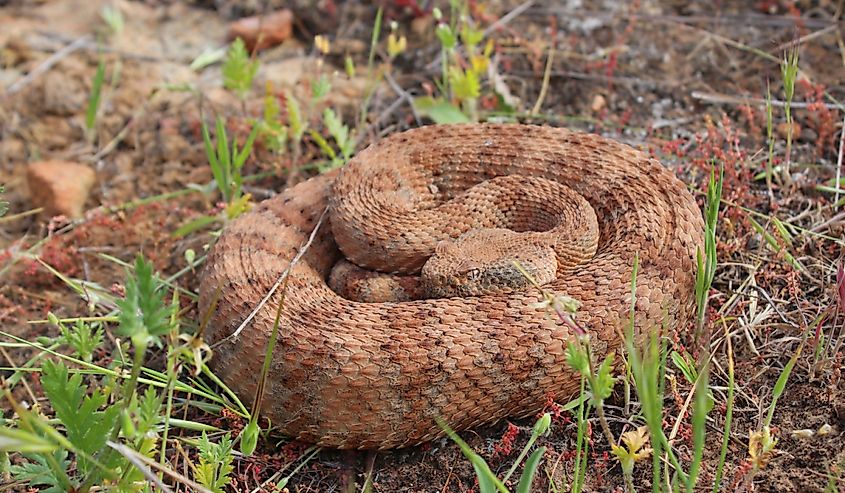
The Southwestern Speckled rattlesnake goes by several common names, including the bleached rattlesnake, Mitchell’s rattlesnake, and the pale rattler. They average about three feet in length, but some can reach up to four feet. Their coloration varies depending on individual habitat, ranging from a base of pink, to brown, to yellow, to white, with darker blotches throughout and a ringed tail.
They are primarily nocturnal during the warm months and become active during the day when the annual temperature drops. They often shelter in rock crevices or within the burrows of small mammals they have preyed on, who are their preferred food, though they are also known to eat birds, lizards, or other snakes.
Great Basin Rattlesnake
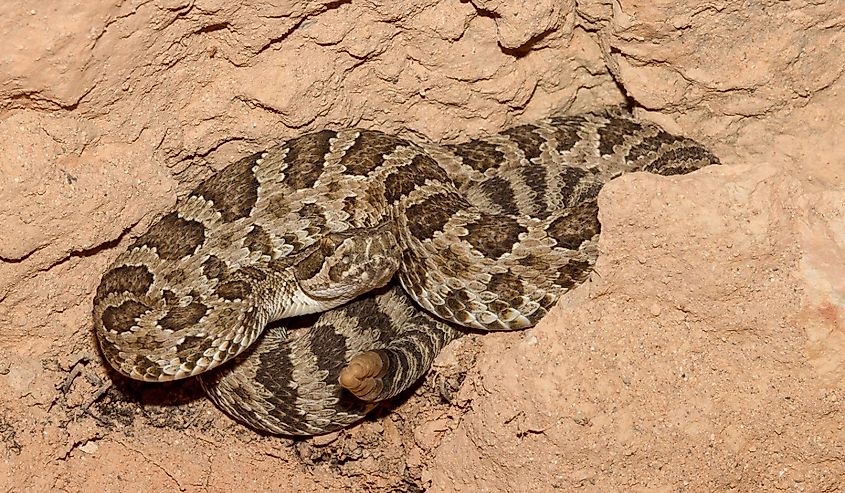
The Great Basin rattlesnake lives all across the Great Basin region of the United States, hence the name, which includes California, Nevada, Utah, Idaho, and Oregon. They can grow up to four feet in length, though they rarely exceed more than three feet. Like all species of rattlesnake, they are ovoviviparous, meaning the eggs are carried and hatched within the mother’s body before the live young are birthed into the world, and Great Basin rattlesnakes often give birth to broods ranging from three to 13 young at a time. They are typically a pale yellow, dusty color, with darker splotches along their back, though usually less patterned than many other rattlesnakes.
California Versus Nevada
Every venomous snake found in Nevada also lives in California, but not every venomous snake in California is present in Nevada, so it is clear that California is home to more venomous species of snake than Nevada. This is likely due to California’s increased climate diversity over Nevada, despite the fact that Nevada’s climate is arguably more hospitable towards reptiles than its neighbor. California also rests along a coastline with the Pacific Ocean, opening it up to the presence of venomous sea snakes, while Nevada is a landlocked state. Whichever state you choose, neither state is an ideal environment for anyone suffering from ophidiophobia!











